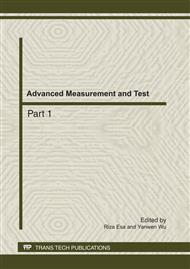p.1724
p.1730
p.1735
p.1740
p.1744
p.1749
p.1754
p.1760
p.1765
Design and Finite Element Analysis of Airborne Cloud Liquid Water Sensors
Abstract:
Airborne cloud liquid water content (CLWC) sensors have been used in weather observation and weather modification for years. However, traditional CLWC sensors are relatively bulky and heavy. Additionally, it is inconvenient to use wind tunnel to calibrate traditional sensors. In order to meet the need of wind tunnel calibration tests, reduce the wind signal interference and reduce the cooling effect of high water content cloud, two new types of hot-wire water meter content sensors are designed in this paper. Using steady-state heat transfer theory, a finite element method is used to simulate temperature distribution of the new water content sensors, including the scenario in which cloud water droplets evaporates as colliding the sensors. In order to minimize sensor error, convection is also considered in the finite element model. Through the numerical analysis of the two new types of hot-wire water content sensors, it is concluded that the sensors designed in this work are able to reduce the wind interference error and extend the CLWC measurement range of the instrument.
Info:
Periodical:
Pages:
1744-1748
Citation:
Online since:
July 2011
Authors:
Price:
Сopyright:
© 2011 Trans Tech Publications Ltd. All Rights Reserved
Share:
Citation:


